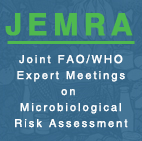 |
Risk Assessment for Cronobacter sakazakii in Powdered Infant Formula |

 |
|
|
|
|
|
|
|
Risk Reduction via Sampling
The effect that a PIF sampling plan has on the risk to infants from C. sakazakii in PIF can be measured in terms of the reduction in risk the plan achieves relative to the risk in the absence of a sampling plan. This is referred to here as the Risk Reduction. In addition to the Risk Reduction, plans can also be differentiated in terms of the probability that the sampling plan will result in the rejection of a lot of PIF with a given distribution of concentrations of C. sakazakii within and between lots of powder.
The Risk Reduction for any given plan is a function of several variables. For any single lot of PIF, the level of contamination and the within-lot variability will determine the likelihood that a sample will be positive for C. sakazakii and thus rejected. In addition, the average of the concentrations of C. sakazakii across all lots and the between-lot variability among the lots will determine the percentage of all lots that will be rejected for any given microbiological limit-sampling plan combination.
The effectiveness of any potential sampling plan in terms of the risk reduction is determined based on the number of contaminated servings that are prevented from entering commercial distribution and can be obtained directly from the change in the mean concentration of C. sakazakii in the PIF before and after sampling.
At the FAO/WHO Technical Meeting on C. sakazakii and Salmonella in PIF (January 2006) the effectiveness of number of sampling plans was explored and reported. Below is a summary of the impacts of 9 possible sampling plans for C. sakazakii and the associated Risk Reduction achieved (assuming 100% sensitivity and specificity of sampling methods are employed). These plans were explored assuming a between-lot and within-lot standard deviation of 0.8 Log CFU/g for mean concentrations of -5, -4 and -3 Log CFU/g. Alternative plans and mean and standard deviations of concentration can be explored using the tool presented here.
|
|
|
|
|
|
|
|
|
|